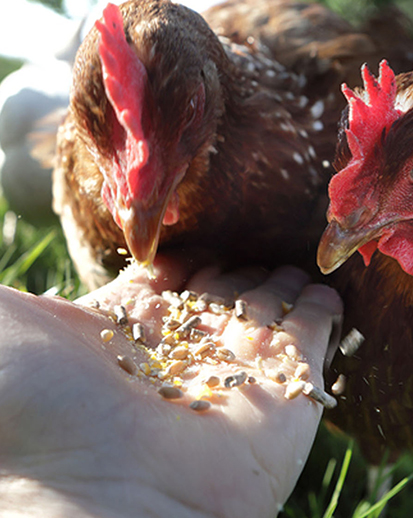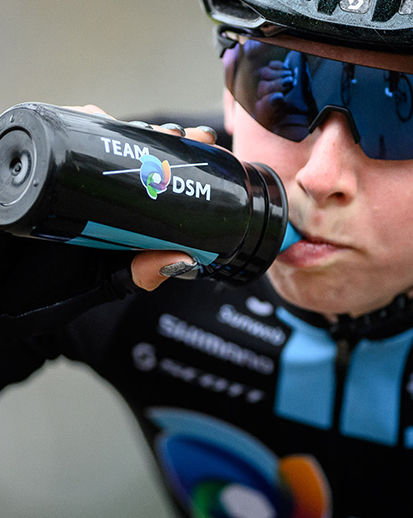Safety, health & well-being
The health, safety and well-being of our employees has always been our number one priority. In 2020, as the pandemic unfolded, we were able to leverage and build on our strong foundations. Many of our office-based employees around the world worked from home for large parts of the year, while — with notable exceptions in some regions — our operations and research & development colleagues largely continued to work from laboratories and plants in adjusted, safe conditions.
We actively monitor occupational safety and process safety — the safety of our people and operations. We also support the health and well-being of our employees through regional and global programs.
|
|
Aspiration |
|
2020 |
|
2019 |
||||
|
|
|
|
|
|
|
||||
Occupational safety1 |
|
|
|
|
|
|
||||
- Frequency Index REC |
|
0.25 in 2020 |
|
0.24 |
|
0.28 |
||||
- Frequency Index LWC |
|
|
|
0.09 |
|
0.09 |
||||
|
|
|
|
|
|
|
||||
Process safety |
|
|
|
|
|
|
||||
- PSI Rate |
|
0.15 in 2020 |
|
0.20 |
|
0.23 |
||||
|
|
|
|
|
|
|
||||
Occupational health cases |
|
|
|
19 |
|
16 |
||||
|
||||||||||
Occupational safety
Occupational safety is the safety of our employees and contractors. In 2020, we were able to build on the robust practices put in place in previous years. We saw a further improvement in the Frequency Index of all DSM Recordable Injuries to 0.24 from 0.28 in 2019, achieving our target level of 0.25.
Frequency Index of Recordable Injuries
12 month moving average
A focus on key sites was key to progress
Our focus on sites with the highest numbers of recordable injuries continued to deliver results, and we saw incident rates decrease by 40% compared to 2019 at these sites. Many key elements of our safety program contributed to this progress, such as the ‘I Care, We Care’ campaign, the drive for visible leadership, the enhancement of key capabilities and the constant attention on hand safety (our top incident category). We also continued to reinforce the importance of the Life Saving Rules in our safety approach. The Frequency Index of Lost Workday Cases for our employees remained at 0.09.
Contractor safety
For our contractors, the Frequency Index of all Recordable Injuries remained relatively stable at 0.47 in 2020 (from 0.45 in 2019).This was despite better supervision and increased attention to contractor selection, qualification and training, which led to significant improvements in the parts of the organization where incident rates where the highest.
A commitment to continuous safety improvement
While the progress on the Recordable Injury rate and the impact of our focus programs are promising, we will continue to strive to make our company fully incident and injury free. To this end, we will drive our standardization and digital capabilities, for example, through the use of comprehensive safety dashboards that leverage data to identify key focus areas and implement improvements at all levels. In addition, we continue to develop our automated processes to learn from our growing databases. Furthermore, by improving our transparency we can better execute our safety programs all over the world.
Another key pillar of our journey on digital safety is our growing library of online training programs. This resource was particularly valuable in 2020, when COVID-19 restrictions limited our in-person training programs.
Process safety
Process safety refers to the safe operation of our facilities. In 2020, our Process Safety Rate improved from 0.23 to 0.20, but we missed our target of 0.15. The reduced rate can be attributed to, for example, the asset improvement programs that began in 2019, now taking effect. We also paid special attention to sites where the most incidents occurred in the past: this resulted in an approximately 60% reduction (compared to 2019) of small product leakages, which account for the majority of reported incidents.
Frequency Index of Process Safety Incidents
We carry out diligent follow-up procedures to ensure that we learn lessons from process incidents. This, alongside our employees’ growing understanding of and compliance with our Life Saving Rules, is helping to prevent the most potentially serious incidents.
Health and well-being
Our health management system is based on prevention, primary care and the promotion of good health. The COVID-19 pandemic brought new direct and indirect challenges in ensuring the health and well-being of our employees. In line with local risks and conditions, as well as the guidance and legislations of regional and national authorities, we scaled up our response to the pandemic and put in place a wide range of COVID-19-related practical initiatives and educational programs to protect the health and well-being of our employees and their families. Early in 2020, we installed a Global Response Team to COVID-19 in order to install relevant safety and health measures throughout the company. Through this approach, we were able to facilitate the rapid deployment of regional learnings globally, and we were able to rapidly respond to the evolving situation.
“As the pandemic unfolded in 2020, taking care of our people was more important than ever. We undertook a wide range of initiatives designed to support the physical, mental and emotional well-being of our people. I am proud of the resilience, engagement and care demonstrated by all of our employees this year — and we are committed to continue our focus on ‘People’ through our unique culture of care, courage and collaboration.”
Cristina Monteiro
Monitoring well-being through the pandemic
We calibrated our response to the pandemic by carefully monitoring how our employees were coping with the situation. Starting in April, we conducted COVID-19 Pulse Checks every two weeks, which provided us with ongoing, up-to-date insights into how people felt about the pandemic and which highlighted any areas of concern. This was a central element of our efforts to deliver a healthy and inspiring work environment, even as our working practices changed and our people navigated the difficulties of the pandemic.
Our Pulse surveys have shown that employees value the flexibility offered by home working and question the need to go into the office when doing so has no added value for their work output. This was confirmed by feedback from our focus group on the ‘Next Normal’. COVID-19 has also affected employee sentiment around trust and job security, as exemplified by an increase in Employee Engagement Survey respondents indicating they want to stay at DSM.
#Optimizeyourimmunity
Starting in April, we provided all our employees — as well as some of their family members — with a free selection of immune-optimizing micronutrient supplements as part of the #optimizeyourimmunity initiative. The supplement selection was regionally adapted based on local legislation, and contained vitamin C, vitamin D, omega-3 and zinc, among other micronutrients. In addition, we implemented a series of regional webinars to educate employees on the importance of immunity in fighting pathogens such as microbes and viruses.
COVID-safe work and workplaces
Furthermore, as well as requiring our employees to work from home when stipulated by regional rules or guidance, we adapted many of our workplaces and behaviors to minimize the risk of spreading the corona virus. Daily temperature checks, entrance- and exit-door hand sanitization, one-way corridors, the prioritization of hand hygiene, social distancing, and the avoidance of non-essential travel were among these many precautionary measures. All these measures aligned with local and regional guidance and legislation.
The agreed terms and conditions for our employees in 2020 remained in force during the pandemic. Regular annual cycles were processed, whereby all salary increases, individual merit increases and incentive schemes were implemented without reservation. Measures were taken to support employees who faced additional costs as a consequence of the lockdown (for example, travel costs in locations where public transport was suspended during lockdown). In addition, in recognition of the enormous effort employees undertook to continue delivering for our company under sometimes difficult circumstances, a special bonus was awarded to all our employees.
Supporting our employees’ physical and mental health and well-being
Many of our initiatives to safeguard and protect the physical health and well-being of our employees were organized by our regional teams. For example, we made advanced health screenings and checks available to employees, offered flu vaccinations, installed a global 24/7 hotline and delivered kits containing reusable masks, sanitizing gel and soap, as well as educational materials, to employees and their families.
In addition, the COVID-19 pandemic increased our focus on the mental health and well-being of our employees throughout the year. Many of our sites put in place a variety of employee assistance programs — involving webinars, private counseling, educational campaigns, and the distribution of self-help material — which offered emotional, psychological and occupational support. In addition, these assistance programs featured online learning and development initiatives to enable flexible and convenient personal growth during the pandemic.
Preventative measures for occupational illness
Beyond our pandemic-related efforts and initiatives, we aim to prevent occupational illness through the design of our processes and products and by providing proper protective equipment. On-site medical professionals offer primary care including emergency preparedness and first aid. We continuously promote good health via a wide range of activities, following an approach based on global campaigning and local implementation.
We recorded 19 occupational health incidents in 2020, a slight increase over 2019. These were mainly categorized as ergonomic issues and allergic reactions. We aim to cut down the number of such cases and are exploring the benefits of ergonomic aids. We also aim to strengthen the understanding and deployment of global health standards for workplace assessments on, for example, chemical exposure and noise management.







